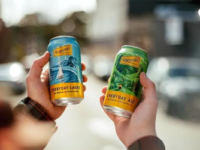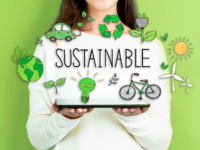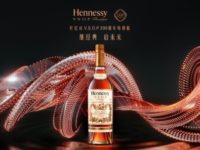 In its annual Word of the Year announcement last year, the Oxford Dictionary departed from custom by giving the title to a graphic – an emoji.
In its annual Word of the Year announcement last year, the Oxford Dictionary departed from custom by giving the title to a graphic – an emoji.
“We are living in an emoji economy where emotions are the language,” Professor Alexis Mavrommatis has said in a presentation on the emotionalising of retail, for Monash University’s Australian Consumer, Retail and Services Research Unit (ACRS).
Now Facebook has bowed to user demands to expand the “like” thumbs-up graphic to include “react” options, so users can use different emojis to react to posts, offering a greater emotional response. It is no longer about the number of “likes”, but also the number of “love”, “haha”, “wow”, “sad” and “angry” reactions.
Mavrommatis says the impact on brands is enormous. “It is now possible to create Facebook vibe maps for brands.”
The first emotion-based social mobile app Opinit launched last year, enabling users to rate any web-based content with such emotions as anger, pride, relief and indifferent.
Are Australian brands engaging with the emotions of shoppers? In the past 12 months, case studies have revealed six ways…
Telling stories
Storytelling as a retail art form has catapulted to a whole new level overseas, with retailers like Story in New York building pop-up retail experiences each month around a story or theme. In Australia, Myer stands out for trialling new experience concepts in the past 18 months.
For example, its Disney Princess shop-within-shop used multiple points of interaction to do what brand partner Disney does best – tell stories. The total immersion experience won Myer POPAI Gold in the Store Design category for creators, Active Display Group.
Applying the heat
Geometry Global came up with a great idea last summer – to raise awareness of the risks of sun exposure via an installation at the annual Bondi event, Sculpture by the Sea. Its giant beach frypan for sunbathers coupled with the emotional ‘We’re Frying Out Here’ campaign attracted more than 500,000 visitors.
More than 20,000 Sunsense sunscreen samples were handed out, and television news coverage reached 16 per cent of the Australian population as well as unanticipated attention internationally. The campaign won POPAI Gold.
Keeping it symbolic
With the rise and rise of emoji and a universal language of symbols, more and more brands are communicating emotion through symbols and mythology. In the past 12 months, the Body Shop has used the classic figleaf symbol to bring the sexy back” to hemp-based soap, using a window campaign that won the POPAI People’s Choice for Double Impact Displays.
Revlon’s “Love is On” has brought the love-heart to prominence in stores around Australia, thanks to a clever execution by Active Display Group. Symbols of heritage and nostalgia have been evident, like the London Bus revisited by Ferrero’s Kinder Surprise in a series of in-store destination chocolate shopping areas, created by Sainsbury Displays.
In the new emoji economy, symbols talk.
Pain and gain
If there is one thing pharmaceutical brands understand in an emotional economy, it is what it means to be in a “pain” category. Often, this means low customer involvement. How, then, to subvert this and associate the brand with pleasure?
Panadol turned this on its head through sponsoring Channel 7’s reality television series House Rules, with the supporting Woolworths in-store promotion achieving a 26.6 per cent uplift in sales, plus a POPAI Award for Blue Star Display.
One judge’s comment on the campaign: “Fantastic and inspiring – especially for a challenging product mainly bought on auto-pilot. A great example of how to integrate ATL and BTL to have a bigger voice where it matters – at purchase point, linking with a relevant TV sponsorship (who doesn’t get a headache from home renovating?!) to re-engage consumers with the Panadol Rapid product, which is then reiterated in an engaging way at shopper level – truly best in class.
“The results demonstrate this, rewarding shoppers with the chance to win a dream holiday persuades them to consider the product for their pain relief.”
Using common senses
Brands have been exploring sensory experiences at retail for years, such as scent-based campaigns and tactile “look, feel and try” installations – all based on the knowledge that the more a shopper can interact, the greater the influence on purchase.
Two elements of this have been ramped up exponentially in the past 12 months, lighting and sound. With LED lighting technologies becoming better, more versatile and more affordable, and the increasing use of digital within point-of-purchase activations, lighting and sound have become “cost to play” in some categories like cosmetics (think Sephora for best-in-class).
Even in mass merchant environments like Target, destination sensory areas are commonplace in cosmetics, and now other categories such as liquor and, naturally, consumer electronics, are catching up. Two in-store installations that have stood out at in Australia are House of Hennessy (for Moet Hennessy, by EDA Australasia) and the Sonos wireless speakers system display (by Gush Creative). Both won POPAI Gold. House of Hennessy used clever lighting and product placement to create an enticing and premium in-store experience, while the Sonos display was a completely interactive solution combining beautiful lighting and design with a premium audio experience.
The meaning of life
In the book section of Myer [in March], by far the largest off-location display was adult colouring books, promising “mindfulness”. Now Officeworks and Kikki K are promising mindfulness and a better life through planning, writing journals, sketching and colouring tools. “Consumers are feeling disappointed, disaffected and disconnected by the crisis of capitalism, by banking systems and by digital ubiquity,” says Professor Sean Sands of Monash University’s ACRS unit. “Now they are seeking greater meaning from their lives. Successful brands will offer solutions to this new mindset, from ways to regulate digital intrusiveness to holistic spiritual spaces, and services that promote wellbeing and happiness.”
In summary, the shift to an “experience economy” we are seeing in FMCG and retail may be powered by technology, but it is ultimately driven by a timeless truth, that people are people. As Shake Shack founder Randy Garutti says: “People will forget what you said, people will forget what you did, but people will never forget how you made them feel.”
Lee McClymont is GM of POPAI for Australia and New Zealand. This article appeared in the April edition of Inside FMCG magazine. Subscribe now.















